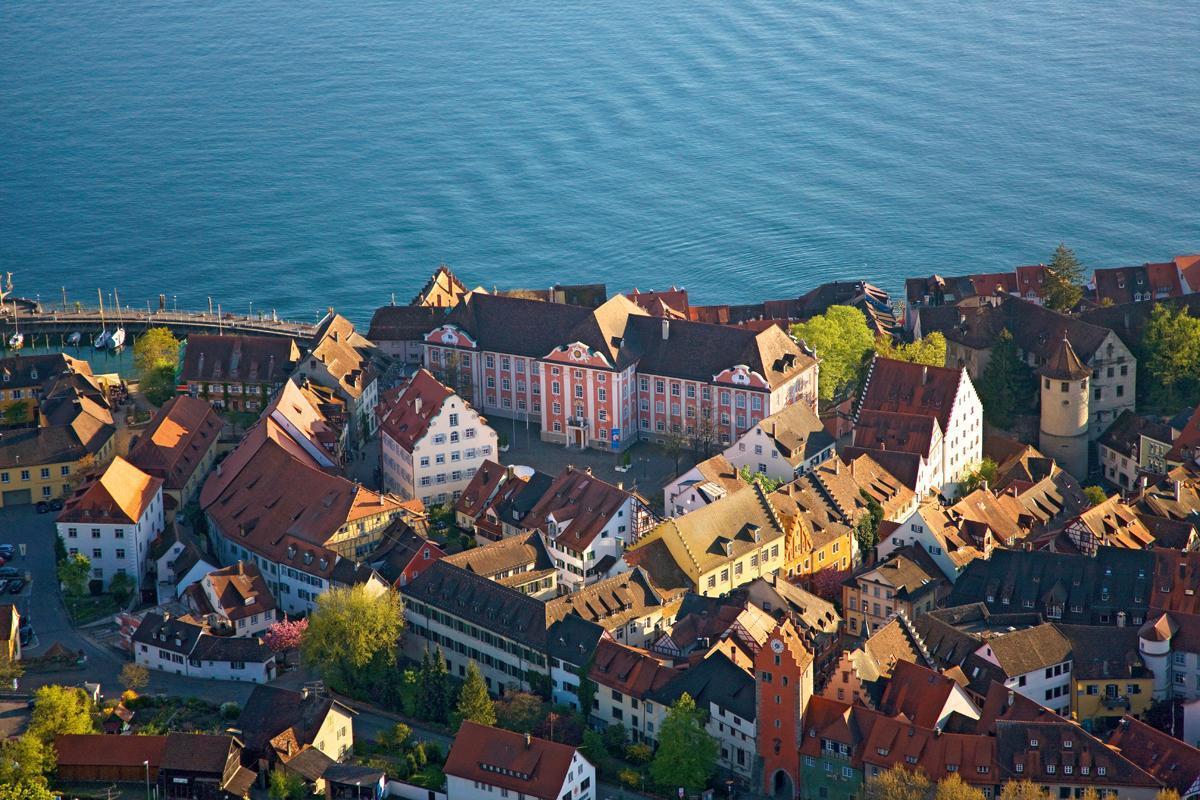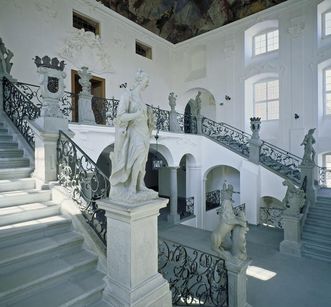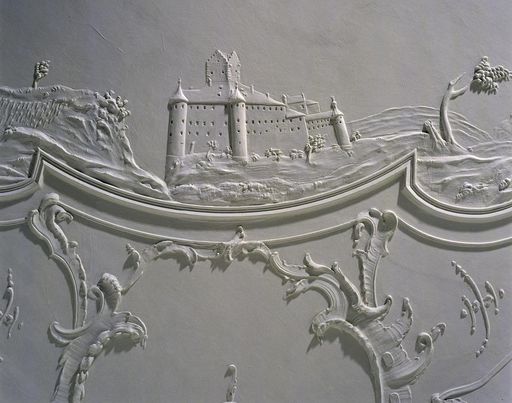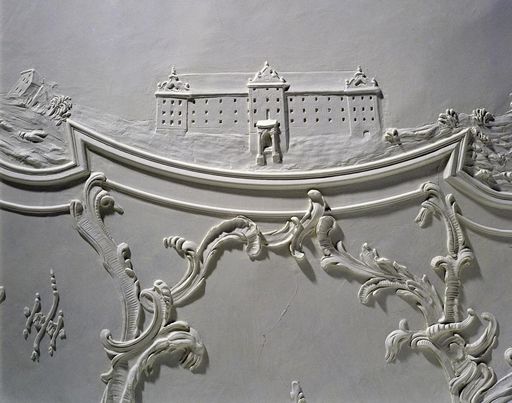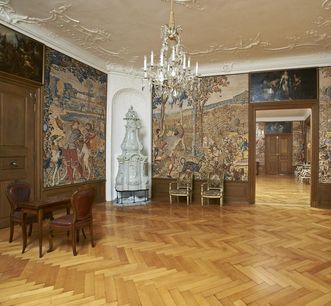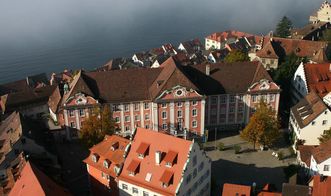An imposing residence
Regardless of whether guests arrived from the lake or town, they were always greeted by a splendid facade of white pilasters. The prince-bishops’ two-story, single-wing building was designed entirely in the style of a royal Baroque structure, majestic both inside and out. Upon entering the palace, the monumental staircase makes a grand impression. It is evident how much this part of the palace served a representational function: this is where guests were received.



